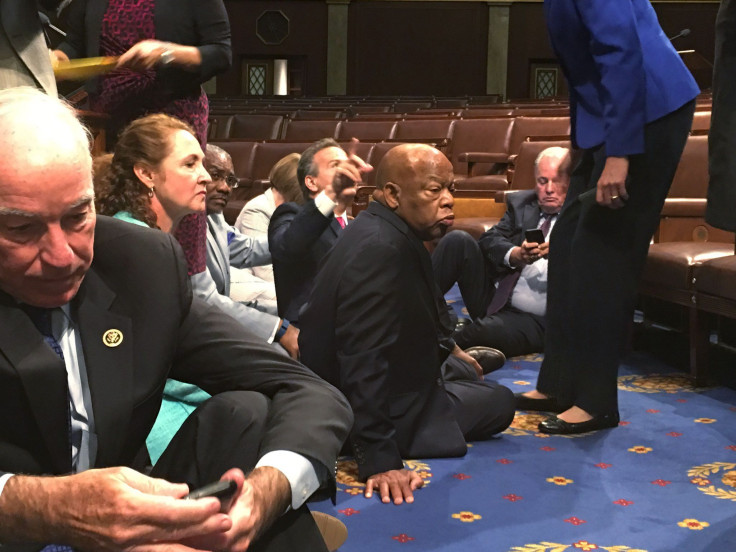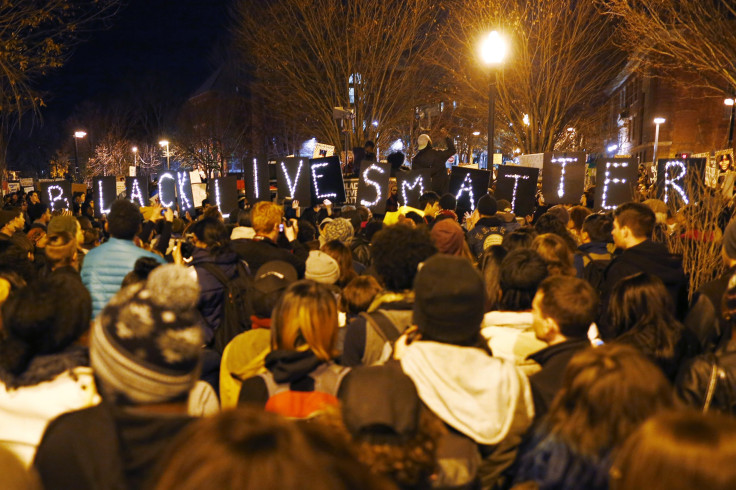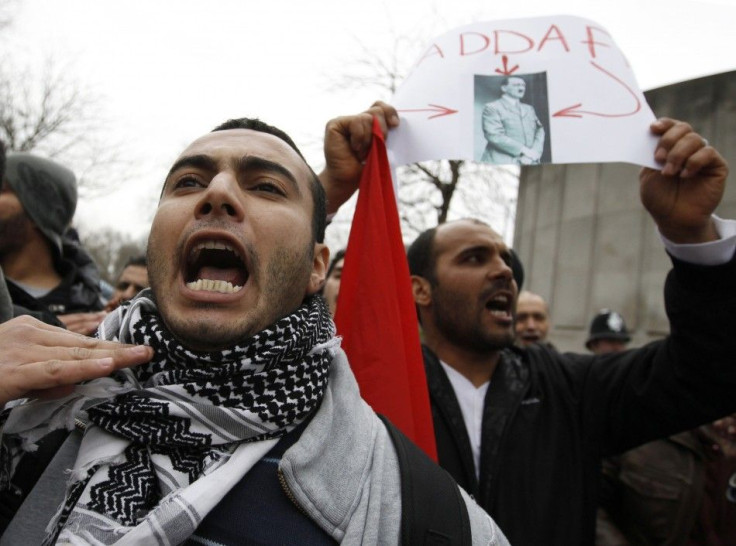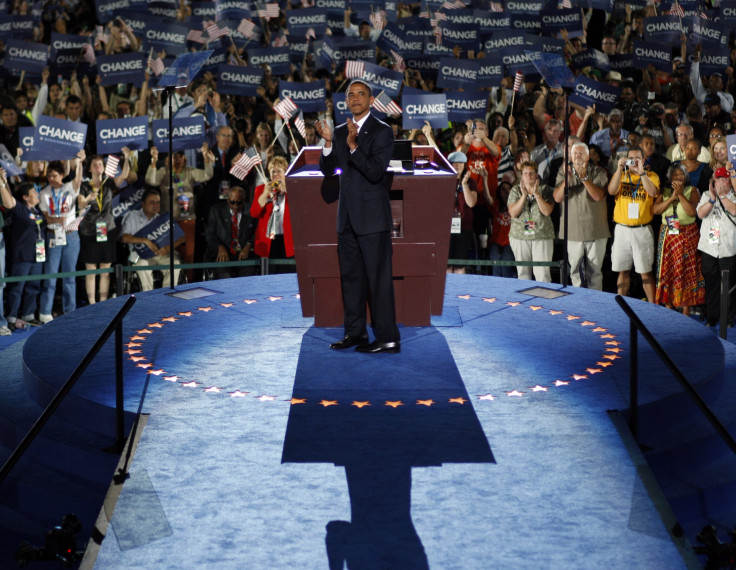5 Times Social Media Tried To Change The World After Periscope Saves House Democrats’ Sit-In

UPDATE: 6 p.m. EDT -- U.S. Rep. Nancy Pelosi, D-Calif., emphasized Thursday the importance of social media, specifically Periscope, to the House Democrats' sit-in over gun control legislation, saying "technology has made a tremendous difference in real time how information is conveyed," according to Fox News' Chad Pergram.
Pelosi on Dem gun sit in. Says "technology..has made a tremendous difference in real time how information is conveyed"
— Chad Pergram (@ChadPergram) June 23, 2016
"We cannot stop until we get a bill," Pelosi added later.
Rep. Nancy Pelosi: It's time for 'deeds, not words' https://t.co/4hJsgVshNU
— Hardball (@hardball) June 23, 2016
Original story:
House Democrats’ historic sit-in on the floor of the U.S. House chamber in protest of Congress’ inaction on gun control ended Thursday after 26 hours. However, the protest might never have made it that long if not for social media.
Any protest needs attention to survive and when the C-SPAN cameras in the House were shut off Wednesday in response to a recess called by Speaker Paul Ryan, the Democrats’ were in danger of losing a platform to make their point. That is when social media stepped in, as members of Congress used various platforms to continue broadcasting the action to the public and update Americans following from home. While many accuse social media users of being guilty of “slacktivism,” saturating the web with their opinions without actually taking any productive action, the House sit-in was a reminder that social media can be a vital tool in the political process.
“Social media adds another dimension to action that allows for new perspectives, pictures and stories to reach new audiences that it never would have been able to years ago,” Jennifer Stromer-Galley, an associate professor at Syracuse University’s iSchool in New York, told International Business Times. “Now you have members of Congress using these tools that some consider lightweight modes of protest for activists. There is something notable when you see political elites using social media for political protest.”
Facing the C-SPAN blackout Wednesday, Rep. Scott Peters, D-Calif., used Twitter’s live streaming application Periscope to share video of the protest as various members gave impassioned speeches. Other representatives shared photos on Twitter and Instagram and later a Facebook Live feed started broadcasting. Stromer-Galley argues that without the use of social media, while the media would still have covered the protest, the story might have ended when the cameras shut off. Instead, Americans were able to follow along into the morning, preserving a sense of urgency in the sit-in.
Some studies suggest, though, that online activism makes a person less likely to take tangible, direct action, such as volunteering their time or money. A Journal of Consumer Research found that people who made displays of “public token support” were nearly 20 percent less likely to respond to a volunteer request than those who supported a cause privately. While Stromer-Galley agreed that this can sometimes be the case, she argued that there are plenty of exceptions, noting that the ease of an action does not necessarily make that action less meaningful.
The House sit-in is not the first time social media has been more than an outlet for public opinion. Here are five times social media has gone hand in hand with real-world action to try to bring about change:
1. Black Lives Matter
Black Lives Matter, the social justice group that emerged in the wake of the shooting of Trayvon Martin in Florida in 2012 advocating for an end to police violence against African-Americans, has been one of the most powerful forces on Twitter in recent years. The group acts as the ultimate counter to the “slacktivism” argument by displaying the power of mass tweeting. In the aftermath of instances of police violence, Black Lives Matter regularly floods Twitter with commentary, calling on elected officials to act and rallying people around the hashtag that shares the group's name. In doing so, the organization has been able to steer the national conversation to police brutality and keep the issue in the news.
However, Black Lives Matter has also been able to use its Twitter footprint to regularly mobilize thousands of Americans for real-world protests after each tragedy. Some of the organization’s leaders have even gained enough notoriety to launch political campaigns, such as DeRay Mckesson, who was a mayoral candidate this year in Baltimore.

2. Barack Obama’s 2008 Campaign
Before the 2008 presidential race, social media had never played a significant role in a major national election. But a then-46-years-young Barack Obama was able to tap into social media to circumvent the traditional political process and take on more established candidates, such as then-Sen. Hillary Clinton. Obama’s campaign had the foresight to turn slogans like “Yes We Can” and “Change” into shareable hashtags and rally voters across the country without putting as many boots on the ground. Twitter has been an integral part of nearly every election at every level since.

3. Arab Spring
In the spring of 2011, Democratic uprisings shook various countries across the Middle East, including Egypt, Libya, Syria, Yemen, Bahrain, Saudi Arabia and Jordan. State-operated media channels either would not acknowledge the protests or produced misleading propaganda about them, so citizens turned to social media to connect with others and organize. Facebook in particular became a vital tool for younger generations to raise awareness about the uprisings, coordinate protests and share what was happening with the rest of the world. Soon the global media was closely following the situation and social media was actively aiding in the toppling of governments.

4. Chilean Students
In 2011, thousands of students in Chile protested the education system in their country, which they argued had become plagued by economic inequality and allowed public education to drastically decline. Twitter, Facebook and other forms of social media were the primary platform young Chileans used to raise awareness about the cause and to organize protests. When police treated protesters with force, students used social media to bring their fight to the world’s attention.
5. The ALS Ice Bucket Challenge
In the summer of 2014, an internet dare began circulating on social media challenging participants to tape themselves pouring a bucket of ice water over their heads and post the video online. The phenomenon, credited to a Boston College student, began as a way to raise awareness about ALS (commonly known as Lou Gehrig’s disease) and raise money to find a cure. The Ice Bucket Challenge caught fire on social media as celebrities and world leaders all got in on the fun. While some no doubt participated for the sake of following the trend, the Ice Bucket Challenge successfully introduced millions of people to the issue of ALS research, inspired direct action and raised over $100 million.

© Copyright IBTimes 2024. All rights reserved.






















